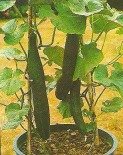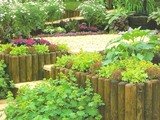Growing Flower Vegetable Seed

Sowing flower vegetable seed is a great way to secure a reliable supply of the vegetable flowers we eat.
Just imagine being able to get these flower vegetables from your backyard vegetable garden anytime you want? Now that’s convenient, isn’t it?
It’s also a practice that’s not very common. Backyard gardeners usually grow herb and vegetable gardens. But growing flower vegetables isn’t as widespread. So having edible flowers in your garden brings a sense of uniqueness. It can also be a conversation piece whenever you have friends and family over.
So which flower vegetables should you grow in your garden?
Well, here are 3 flowers vegetables examples…
- Cauliflower
- Dandelions
- Purslane
These 3 are easy to grow from seeds.
Growing Cauliflower from Seeds
The first step in growing the cauliflower is to choose the type of seed you want to grow. I usually choose between these 3 types.
I like…
- The white hybrid (which is the most common
- Violet Queen (which is purple. It adds color to the garden
- Cheddar (this variety is orange and also adds color to the landscape
The next step is to prepare the plot where the cauliflower would be planted. The cauliflower is a heavy plant and would need firm soil to support its weight. As a result the soil should be prepared in the fall months.
The snow and the cold weather would allow the soil to be compacted. This type of soil would be suitable when the cauliflower is sown next spring.
Additionally when the soil is being prepared in the fall it should also be enriched. Thus digging in some well-rotted compost into the site is also a good idea.
The third step would be to begin sowing the cauliflower seeds indoors. You can use a seed tray to begin this action. You should also sow seeds about ¾ of an inch into the soil and keep them well watered.
Furthermore you should keep the tray with the sown seeds in a warm location. That’s because the seeds need about 70 degrees Fahrenheit to germinate.
The next step would be to transplant the seedlings into the vegetable garden. The best time to do this is 2-3 weeks before the last frost date.
The seedlings should be planted about 18 inches apart when transplanted. Remember the cauliflower can get pretty big so each plant would need a lot of space to grow properly.
Finally the plants should be watered regularly. Additionally because the cauliflower is a leafy vegetable it should be fed organic fertilizers that are higher in nitrogen. Nitrogen helps grow leaves.
Follow these steps and in 50-70 days (the average length of time that cauliflower takes to grow and mature) you’ll be harvesting fully grown cauliflower plants.
Growing the Dandelion Flower Vegetable Seed
Dandelion seeds will grow anywhere and in any type of soil. So this means that they need little care and attention from you.
However dandelions should still be grown in rich soil and watered frequently as well. Remember they are being grown to be eaten so it would be wise to take proper care of them to get the best results.
Taking care of your dandelions lessons the chance of the leaves becoming bitter and unpleasant to eat.
Dandelions can be sown directly into the garden 4-6 weeks before the last frost date. You should also sow them at least 6 inches apart from each other to give them adequate spacing.
When the plant begins to develop and is large enough, you can tie up all the leaves together (sort of like a ponytail pointing upwards).
This causes the inner leaves to become white (due to the lack of sunlight) and sweet. This helps a lot in terms of taste when these leaves are added to meals. You can also eat the outer leaves but more times than not they would be more bitter in taste.
Follow these steps and in 85-95 days (the time it takes for dandelions to grow and mature) you’ll be harvesting dandelions.
Dandelions are More Beneficial than a lot of Us Realize
You can use every part of the dandelion flower.
- The roots can be prepared as a vegetable or in tea
- You can cook the leaves along with other vegetables or use them in salads
- And the flowers can be used to make wine
This way no part of the dandelion flower is wasted.
It is also believed that the dandelions possess medicinal properties. Some believe that they are instrumental in treating acne, heart disease and liver ailments.
So I guess having the dandelion flower vegetable in your garden is a major plus.
Growing Purslane Flower Vegetable Seed
So what is purslane?
Well, purslane is a low growing weed that is found mainly in lawns. They can be easily identified by their yellow flowers and fleshy leaves.
Now this flower isn’t very attractive when they are grown in the vegetable beds. So you may want to think long and hard before planting them. In other words…if you spend time and energy to ensure that your garden has a striking appearance then your purslane may not be for you.
You see, this flower tend to spread rapidly once its roots are set in the soil. So they can be a bit too wild for the backyard gardener who is conscious about the look and feel of his or her garden.
However…
For the person who is health conscious the purslane may be a valuable plant to have. Purslane is known to be rich vitamin C and alpha linolenic.
So let’s get down to the dirty work of sowing the purslane flower vegetable seed. Here’s what you’ll need:
- Some puslane flower vegetable seed
Nursery pots or flats- A designated space in the garden
- Rich compost or maybe potting soil (whichever is more convenient)
- And a trusty trowel
You can look through a flower vegetable seed catalog for some purslane seeds. But if you come across some of these plants growing in the wild then you can uproot them and transplant them into your garden. (The second way is a whole lot easier).
Purslane seeds grow best in a nursery. So add some of the potting soil or rich compost to the nursery pot or tray to start the seeds.
Then sprinkle the flower vegetable seeds and sink them into the compost or the potting soil. Then water the pot well (but be careful…you don’t want to spray the seeds out of the pot with too strong of a stream of water).
Next place the pot with seeds in a spot that gets a lot of indirect sunlight. In other words you don’t want to put the seeds in direct sunlight. This hampers their ability to sprout and grow. If you follow this step your seeds should germinate in 2 to 3 weeks.
Wait until the plant has sprung out of the ground and is beginning to spread before transplanting them. This is an indication that it is strong enough to withstand the elements of the outside environment.
Once the purslane is transplanted ensure that you keep watering them. And when they begin to spread even more…then you know that they are mature enough to harvest their leaves.
These leaves can then be used in salads or stir-fry. But I prefer them in a fresh salad. This way all the nutrition in them is left intact and not cooked away.
A Final Word
So these are 3 example of flower vegetables that can be grown using the flower vegetable seed. These vegetables are healthy and nutritious.
They are also unusual. This makes them a great conversation piece whenever you have guests over (especially for dinner). You can always carry them to your backyard garden for a mini tour of your garden.
And who knows…
Maybe they’ll appreciate your cooking more once they are aware of where the food is coming from.
Nonetheless cauliflower, dandelions and purslane are great for the gardener who is interested in flower vegetable seed.
Move from Flower Vegetable Seed to Vegetable Garden SeedsOR
Home










